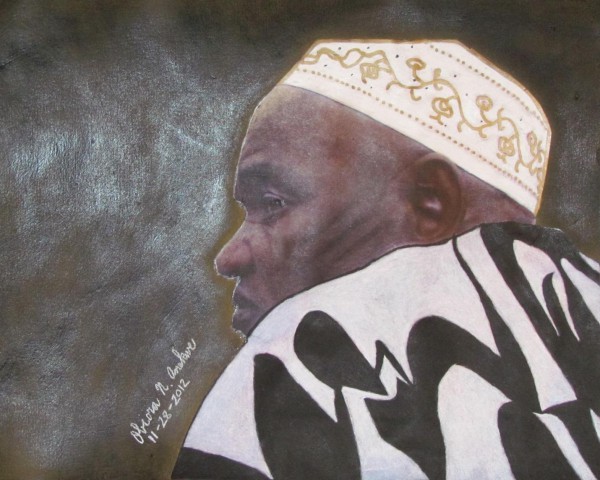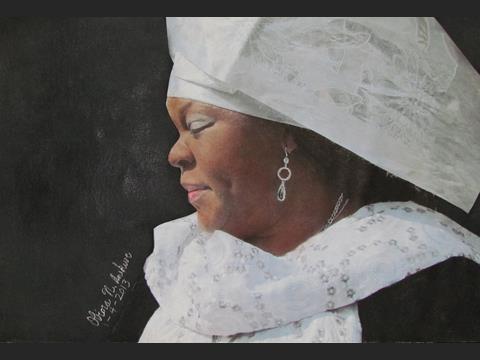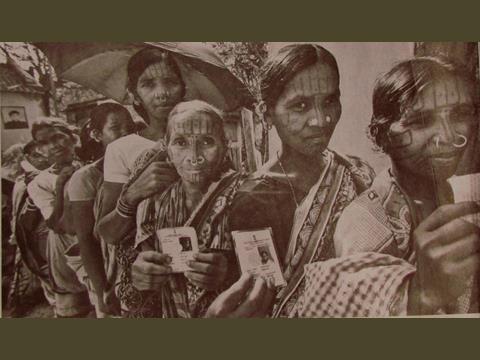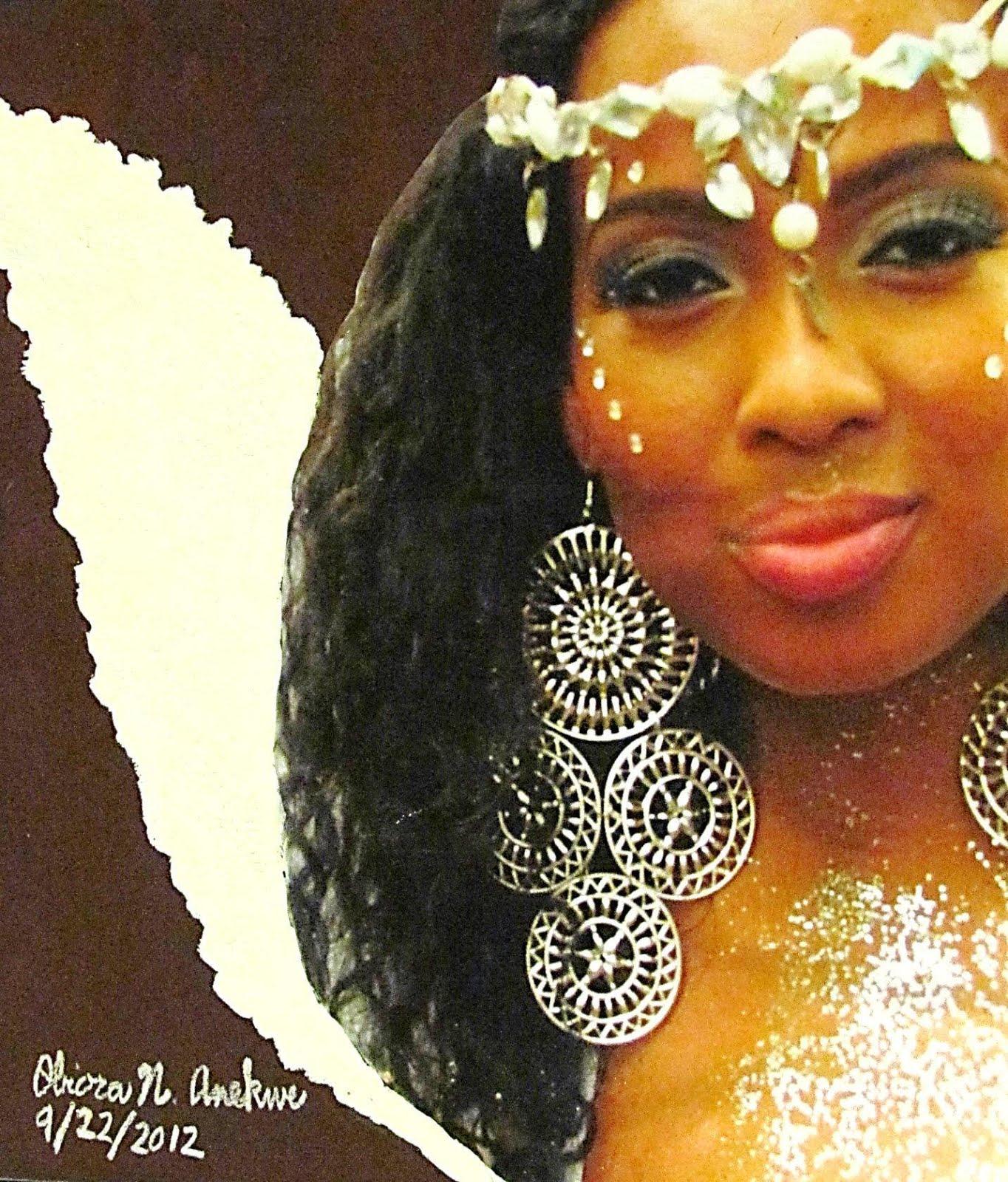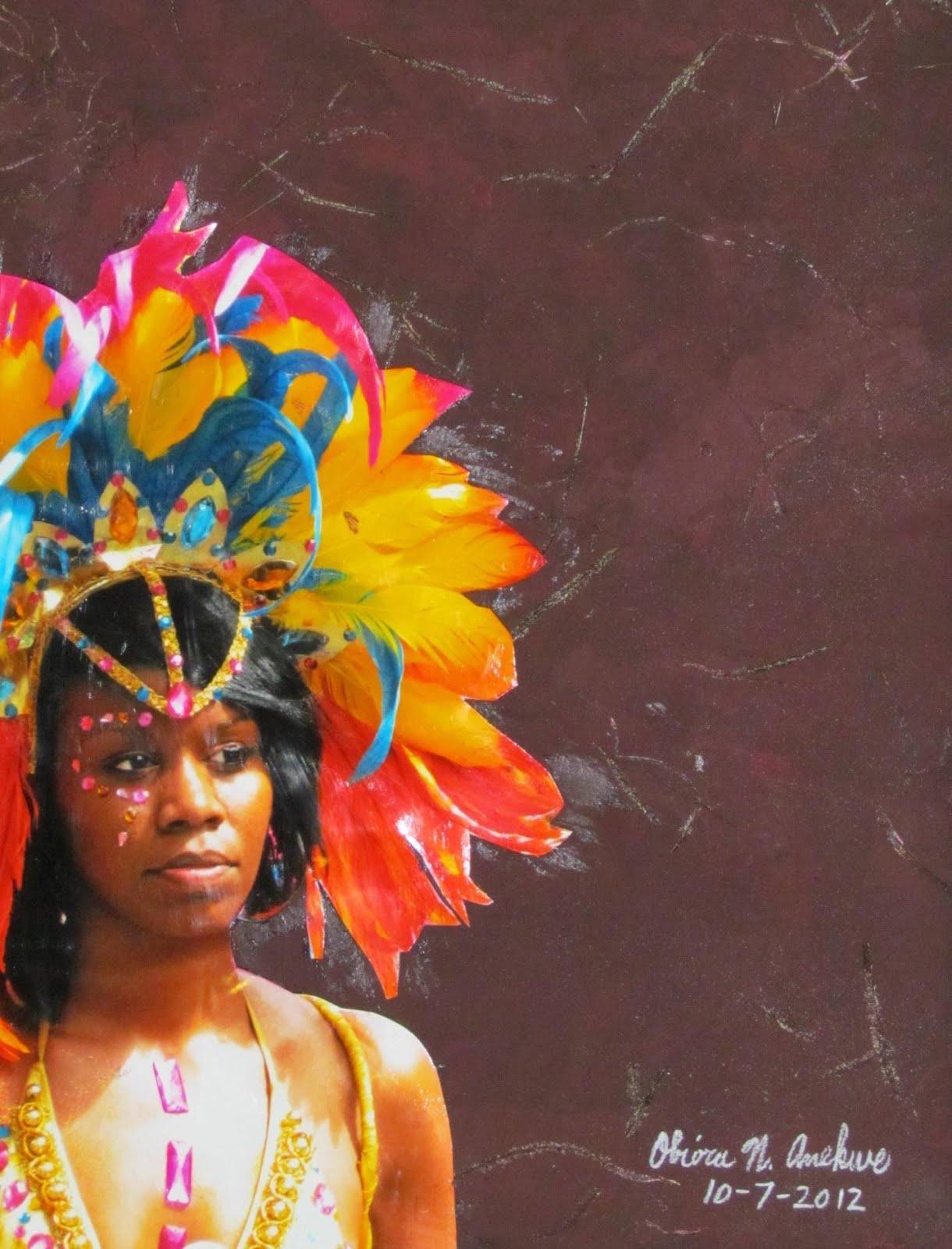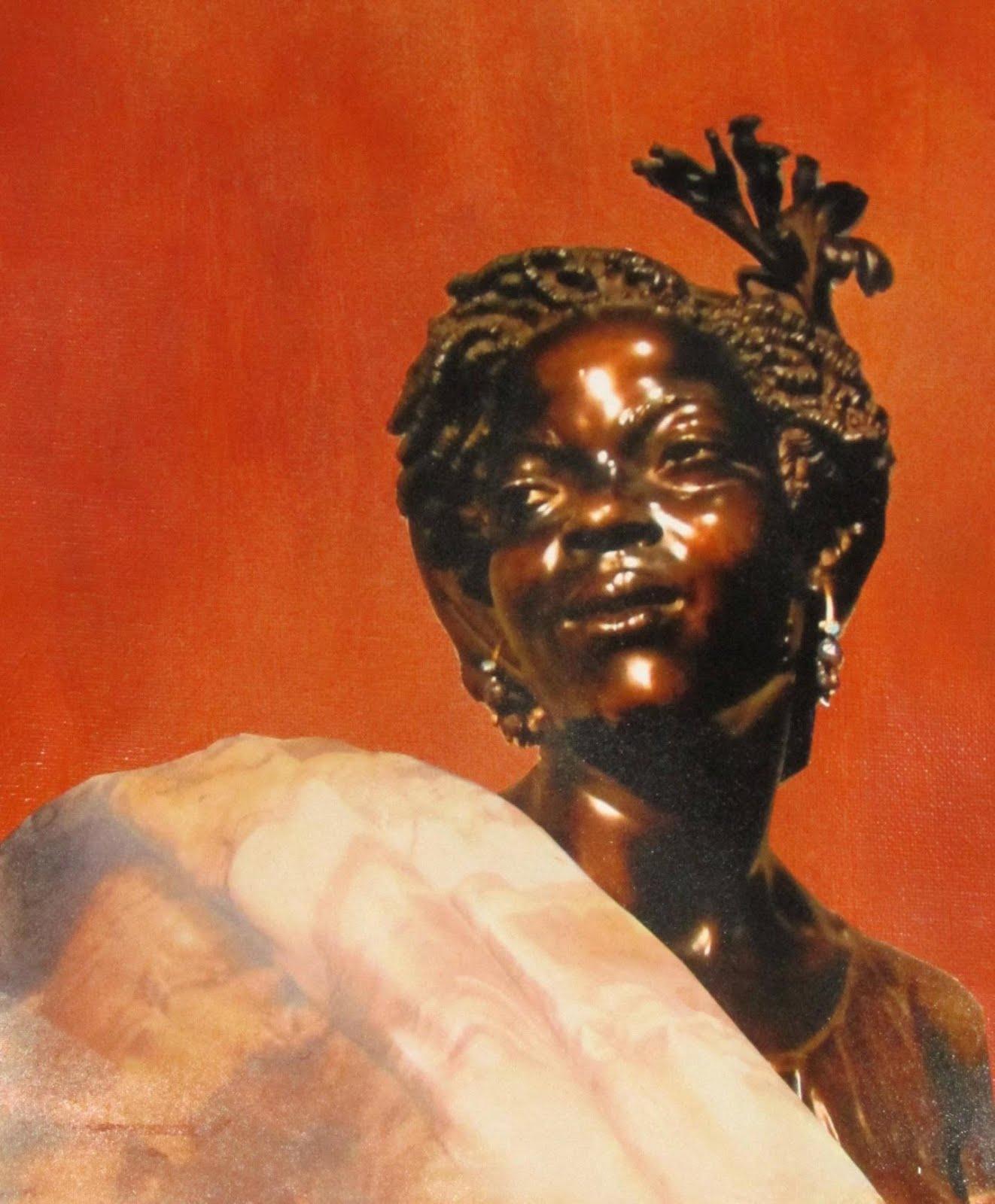Global Colorism An Ethical Issue and Challenge in Bioethics
Main Article Content
Abstract
Global colorism is seldom discussed in the field of bioethics, but it affects almost every facet of medical practice. The ethical challenge of colorism has global implications that are psychologically, physiologically, sociologically, and medically related. One impacts the other, sometimes without much notice. My goal for this paper is to bring issues related to colorism to light in order to begin the process of holistic healing for people of color who are often the most vulnerable in health care and medicine. Secondly, I hope that this discussion of global colorism will bring forth a greater realization that more research needs to be conducted on the various impacts of colorism in medical practice.
What is Colorism?
According to Baruti (2000), colorism is a global prejudice that people of African ancestry have toward each other and seemingly use against or to the advantage of themselves and others with relatively similar complexion. Herring (2004) also defines colorism as “discriminatory treatment of individuals falling within the same ‘racial’ group on the basis of skin color” (p. 21). In order to provide a more expansive definition of global colorism, I would like to emphasize in this paper that global colorism may also be promoted and practiced by the oppressed (in this case, people of color) and the oppressor (post-colonialist Caucasians). As such, the term racism, for the purpose of this paper, is referred to as discriminatory power dynamics externally expressed by post-colonialists of European descent through conscious decision-making practices based on the skin tone and complexion of oppressed people of color.
The History of Skin Color
The various skin colors of humans that currently exist evolved over the past 60,000 years as humans dispersed out of equatorial Africa and adapted to new environments (Jablonski, 2012). Specifically, scientific records confirm that all humanity originates from the Khuiland Great Lakes region in northeast Africa before 7 million years ago (Bynum, Brown, King, & Moore, 2005). Subsequent migrations occurred east to Ethiopia, north to Egypt and Eurasia, south to South Africa, west to Chad, West Africa, and North Africa (2005). Thousands of years later, humans migrated out of Africa onto every continent on the planet (2005).
Because ecosystems in Africa changed beginning 2 to 1.5 million years ago, weather conditions became highly seasonal. These unpredictable changes produced transitions from forest to woodland and woodland to grassland (Jablonski, 2012). As a result, plants and animals either evolved to cope with these changes in their environments or they became extinct (Jablonski, 2012). As the late archaeologist J. Desmond Clark cited, human populations followed the seasonal migrations of the herds they depended on (2012). This action drew some populations of people northward and eastward out of Africa into Asia. By 1.8 million years ago, these people were living in central and eastern Asia (2012). As indicated in Image 1, this Facebook advanced image shows the interconnection of the human race on earth throughout thousands of evolutionary years. Note that the divided regions of the earth can fix approximately as a whole like a puzzle if these regions are digitally put back together. This phenomenon can be explained because the earth once was one collective body of land that eventually divided into various regions or continents because of environmental climate changes.
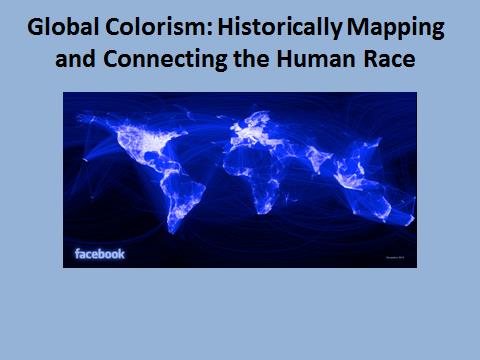
Thus, it is reasonable to conclude that skin color in humans evolved over many centuries to suit the environments where people eventually settled (Jablonski, 2012). As Jablonski (2012) notes:
The first hominid dispersal out of the tropics of Africa required changes in bodies, behavior, and culture to adapt to new environments and respond to new threats. The intensity and yearly pattern of sunshine in tropical Africa is, and was, very different from that of most of Asia and Europe.
Research estimates that it took 10,000 to 20,000 years for human populations to achieve the optimal level of pigmentation for the regional areas they settled (Jablonski, 2012). It is significant to note that people living in Africa have high levels of mixed ancestry and display more genetic diversity than all the rest of people in the world combined. This type of diversity is most visible through skin pigmentation (see Images 2 and 3). Nevertheless, this variation in skin pigmentation within Africa is reflective of natural selection, migration, and the creation of new pigmentation mutations (2012).
The Origins of Colorism
Colorism mostly originates from the mental and physical enslavement of black people in the Western Hemisphere. For example, in 1712, Willie Lynch gave a speech in Virginia to teach his proven and effective methods of enslaving black people in the Americas. He was the British slave owner in the West Indies for which the term lynching is derived from when people were hanged on trees by a mob of people.
In Willie Lynch letters: The making of a slave, Lynch (1712) revealed that segregating the black race according to color served as the most effective means by which slave owners could control and manipulate their black slaves. In order to become an effective slave owner, Willie Lynch (1712) argued that “you must use the dark skin slaves vs. the light skin slaves, and the light skin slaves vs. the dark skin slaves….They must love, respect and trust only us…the slaves themselves will remain perpetually distrustful of each other” (p. 1).
Early in the colonization of North America, slave owners began to do as Lynch directed. They separated the light-skinned, mixed race (mulatto) slaves and housed them in the master’s house. These slaves worked in the home of their slave master because, oftentimes, they were the biracial children of their slave master (Ulen, 2013). On the other hand, darker-skinned black slaves worked in the outdoor fields and lived in the external living quarters (shanties) near the big house or slave master’s home (Ulen, 2013). This system of color segregation helped establish and promote what we now know as colorism within the international black community. As Willie Lynch’s message of dividing and conquering black enslaved people spread throughout North America, it also gained acceptance as an effective means to guarantee the enslavement of other colonized people around the world.
Colorism and racialized discrimination of African people were two dominant factors involved in justifying institutionalized slavery in the Americas. It essentially was a savvy political move to maintain the transatlantic slave trade (Jablonski, 2012). In the U.S. War of Independence, the enslavement of blacks was one of the most significant factors in fighting for and defending American freedom (2012). Needless to say, there is an inextricable relationship between slavery, slaveholding, and the founding of the United States of America (2012).
The strategically planned dehumanization of Africans began when colonialists first associated blackness as evil and negative through a series of brutal and negative imagery and mythical language. For example, colonialists often used scripture in the Bible as a justification of slavery. In the account of Cain’s exile, scripture was inaccurately interpreted to infer that the black descendants of Cain were cursed, when, in fact, the mark of Cain conferred God’s protection and involved a curse on any person who harmed Cain in his exile (Jablonski, 2012). It was only later when Christian colonialists purposefully misinterpreted the mark itself as a sign of punishment, shame, and corruption that black people were a cursed race (2012).
Race Constructs: Sociological, Rather than Scientific
In a lecture at Harvard University, Nell Irvin Painter (2012), author of The History of White People (2010), pointed out that “race is an idea, not a fact.” Trautmann (2004) rightly asserts that “race is socially constructed, that it is not objective but conventional, and that, therefore, it has contingent, historical character that is not perduring but governed by forced in play at a given time ” (p. 214). Therefore, there is no scientific evidence to allude to the belief that race is a scientific quality. Race is an abstract and flexible notion. It is sociologically, rather than biologically, based. The meaning of race has also translated into interpreting physical characteristics (Painter, 2012). We mostly view beauty, especially light skin complexion, as personal characteristics in which we deem as attractive and worthy of deserved attention (2012).
The age-old question of whether race determines genetic differences has been debated for decades. In 2000, the Human Genome Project concluded that there is virtually no genetic difference between people of different skin colors (Rogers, 2010). In fact, scientists have discovered that all humans share 99.99 percent of the same genetic code, no matter the race of the person (Rogers, 2010). Geneticist J. Craig Venter concluded that this fact proves that race is definitely a “social concept, not a scientific one” (2010, p. 1). Nell Irvin Painter notes that the concept of whiteness originates from ancient Rome, where slaves were ironically, mostly white. The elevation of some ethnic populations such as Germans as “whiter” than other groups originates from scientists who measured human skulls and set abstract criteria for beauty in people (2010).
Colorism Around the World
Brown-Glaude (2007) notes that in European-colonized countries like Jamaica and Tanzania, there are perceptions that light-skinned people in the middle and upper classes typically fair better during tough economic times than darker-skinned people. In fact, these groups have even thrived during economic hardships (Lewis, Harris, Camp, Kalala, Jones, Ellick, Huff, & Younge, 2013). Therefore, this occurrence actually translates into real economic, social, and health care advantages.
In Indian society, for instance, colorism affects just about every social, political, and health-related stratosphere (see Image 4). The caste system in India is a unique form of social division in society. For instance, the Aryan race (composed mostly of the upper class in India) was historically largely equated with the European/Caucasian race. They were considered as warriors who were physically sturdy and handsome due to their lighter skin, blue eyes, and sharp nose. The Aryans were mostly the European invaders of India whose descendants now occupy the upper class. In contrast, the indigenous darker-skinned people of India were described as ugly because of their dark skin, as extensively documented in the canonical text of the Hindus. Many of these religious writings expound on the racial distinction between lighter-skinned Aryans, who migrated into India from the north, and dark-skinned indigenous Indians of the south (Glenn, 2009). Thapar (2008) argues that the term “Aryan” refers to a specific term of language and a sign of social superiority that has been misused to refer to race. These views have been evident in reinforced ideals of social Darwinism and biological determinism.
One of the negative side effects of colonialism in India and the Americas was a divide and conquer social order based on such external attributes as skin color, hair texture, and facial structure (Khan, 2009). This well-devised form of racial categorization was established in order to maintain social order. In Trinidad, for instance, race-based, unscientific social orders were promoted in order to maintain social, legal, and moral order (2009). Most Caribbean nations such as Trinidad held a nationalistic and scientific belief that race was both biologically and socially heritable (2009). Although these belief systems still exist today, some scholars contend that such localized coloristic stratifications existed well before European colonialism (2009). As John Rogers points out, “ideas of difference with a quasi-biological character were already prevalent before the beginning of British rule, and many of the symbols and labels propagated in the name of racial ideology were drawn from earlier periods” (Khan, 2009, p. 103). It is interesting to note that after colonialism, there has been an increased presence in Afro-Trinidadian traditional heritage such as calypso and steelpan music, the Orisha religion, and Carnival celebrations (see Images 5 and 6). As one can observe in Images 5 and 6, celebrations such as Carnival highlight the diversity of skin color and the influence of the Yoruba religion on Caribbean culture.
Skin Tone Bias and Colorism in Egg Donations for Assisted Reproduction
The practice of skin tone bias and colorism has impacted the practice of donating eggs for assisted reproduction. In an effort to preserve skin tone, some egg donor recipients base their selection on the skin color of egg donors. Skin tone is one of the many categories in which some egg donor databases use to characterize and differentiate donors (Thompson, 2009). For instance, a source of skin tone signaling in structuring commercial U.S. egg donation is through donor photographs and biographical detail (2009). In most cases involving sperm donation, photographs of a donor as a child are common visual representations (2009). In contrast, adult rather than baby photographs of egg donors are often provided to potential donor recipients.
These examples highlight how potential donor recipients are able to unscientifically determine the potential skin color of their future child. This practice, of course, is not guaranteed to produce babies with lighter-skin, but it does establish a framework in which donor recipients may produce lighter-skinned babies. Therefore, a consideration of skin tone in egg donation illustrates the process of racializing biology for the sake of light-skinned preservation (Thompson, 2009). Further research in bioethics needs to be conducted in order to explore this vital and significant issue in global and medical colorism.
The Physical, Sociological, and Psychological Impact of Colorism
Psychiatry serves as an ample foundation to discuss global colorism because what we think about ourselves often affects what we eventually do. A critique of mental behavior can ultimately help explain the practice of internalized skin discrimination within certain groups of colored people. According to psychiatrist Frantz Fanon (1952), darker-skinned people who have been oppressed as a result of colonialism tend to later take on the psychological, spiritual, and physical attributes of their oppressors. For instance, the practice of lightening one’s skin is a physical expression by the oppressed (black people) to assimilate and become as their oppressors (Fanon, 1952). They find little to no value in their own cultural expressions of selfhood, but rather depend on the spiritual, physical and psychological characteristics (language, religion, dress, etc.) of their oppressors in order to define and validate their human existence (1952). In fact, one can argue that the reason why people of color were and continue to be oppressed by the dominant power structure is because of the collective human ego’s desire to dominate and control the most vulnerable by any means necessary, even to the extent of promoting non-scientific beliefs about inferiority based on skin color.
Noted psychiatrists such as Frantz Fanon and Frances Cress Welsing explain that colorism in medical practice is inherently based on self-hatred and low self-esteem rooted in colonialism and white supremacy. In many ways, the practice of colorism is a form of self-hatred that ultimately causes greater harm to the oppressed, not the oppressor. For instance, rather than ridding oneself of his or her dark melanated skin through the act of skin bleaching, greater physical and psychological harm is caused to those who are the most vulnerable in health care. But on the other hand, one can also argue that because of the salient effects of global colorism, it impacts all humans interactions through medical challenges such as negative mental health and psychological implications of low self-esteem found among some dark-skinned women.
Colorism systematically seems to affect many areas of medicine and health care practice. For instance, if a person with highly melanated skin has internalized a belief system that says that he/she is inferior based on the darkness of skin color, then he/she is more likely to rid him/herself of this physical attribute by eliminating it in order to psychologically feel better about one’s own human existence. Unfortunately, colorism even affects how research is framed, what is studied, who is studied, who is selected as research subjects, and how they are selected. Medical historian Harriet A. Washington (2007) most vividly documents this belief in her book, Medical Apartheid, which is considered one of the most comprehensive historical critiques about unethical medical practices conducted on black people in America.
Harvard trained sociologist W.E.B. DuBois was one of the first scholars to address the psychological conflict that people of color have to encounter in their attempts to assimilate to the dominant white social group (Myrdal, 1944). He often referred to this particular phenomenon as a “double consciousness,” indicating that it was a response to cultural domination in a color-ranking society (Lewis, et al, 2013). DuBois (1903) noted in his breakthrough book, The Souls of Black Folk, that “the problem of the twentieth century is the problem of the color-line,—the relation of the darker to the lighter races of men in Asia and Africa, in America and the islands of the sea” (p. 1). This problem has persisted even throughout the 21st century.
Unbeknownst to many, colorism has unfortunately been a determining factor in unethical, discriminatory practices in scientific inquiry. It has negatively affected people of color and affected the way in which science is practiced. But most significantly, it has affected the perspective to which darker-skinned people have viewed themselves, which is often manifested in internalized communal practices such as colorism within the black and brown communities of color throughout the world.
Psychiatrist Frances Cress Welsing’s Theory of Color Confrontation helps to explain the negative practices of colorism and the strategic suppression of highly melanated people around the world. Her theory is based on the research analysis of race theorist Neely Fuller, Jr., who argued that racism is a system woven into the very fabric of American society (Welsing, 2013). Fuller concluded that racism and white supremacy are articulated and practiced in every social system (Welsing, 2013), including for our discussion, science and medicine. Welsing (2013) argues that white supremacy and racism are systems built on the global view of the white minority class that highly melanated people around the globe must be suppressed and even eliminated in order to maintain white domination. In essence, we can see how such a system is actualized through decade’s old race-based medical practices.
Racism, as Welsing (2013) contends, is woven into the very fabric of human society, especially within American society, which was distinctly built upon through the physical and now mental subjugation of people of a darker hue. She concludes her analysis by arguing that black suppression by the white race is a practiced form of psychological projection of white fear and inferiority (Welsing, 2013). In other words, the white population’s internalized inferiority complex and global fear of population extinction has been historically masked through vicious and violent acts of racism, white supremacy, human enslavement, and territorial colonization.
Historically, a miseducation about skin color has persisted over the centuries. In fact, the enslavement of dark-skinned people was systematically justified because slave owners promoted the non-scientific concept that blacks were genetically inferior and less human than white people. Although geneticists have consistently demonstrated that race is biologically unsubstantiated, this belief unfortunately still exists among some scholars (Funderburg, 2013). In fact, it was German scientist Johann Friedrich Blumenbach who established racial categories according to skin color in the late 18th century (2013). This form of color classification was eventually used as a mechanism to divide and conquer the hearts and minds of melanated people in order to continue the slave trade and justify the suppression of the darker race throughout the world.
Studies related to colorism
Skin color affects life outcomes in physical health, mental health, and interpersonal relationships (Luisa et al., 2006; Eric et al., 2002; & Wade & Sara, 2005). Wilder and Cain (2011) argue that colorism is perpetuated more frequently by women. It has caused a significant negative psychological impact during the childhood and adolescence of females (Wilder & Cain, 2011). Stephens and Few (2007) have also examined skin color in relation to adolescent perceptions of sexual attractiveness in women via music videos and found that African American boys believed that light skin is the most significant factor in beauty ideal. De Casanova (2004) conducted a colorism and self-esteem study on Ecuadorian Latina adolescent girls and discovered that Ecuadorian girls describe beauty ideal as “tall, thin, long yellow hair, and light eyes” (p. 296).
Colorism seems to affect every aspect of our social existence, from employment hiring practices to prison sentencing. For example, in the United States, South Africa, the Caribbean, India, the Philippines, Korea, Latin America, and Mexico, skin color is a major factor in determining one’s social stratification and its outcomes, whether in education, employment opportunities, income, and health status (Jablonski, 2012). It has had a negative psychological and physical impact on mainstream America’s perceptions of personhood to such an extent that skin color is more significant than more tangible human qualities. For example, a Johns Hopkins University study in 2011 of U.S. Census data concluded that mixed-race people are socially placed below whites, but ahead of blacks (Smith, 2011).
Moreover, a recent Villanova University study in 2011 reveals that dark-skinned black women are given longer prison sentences than their lighter-skinned counterparts.
The study, which sampled of over 12,000 black women imprisoned in North Carolina between 1995 and 2009, showed that light-skinned women are sentenced to 12 percent less time behind bars than their darker skinned counterparts. The results also showed that having light skin reduces the actual time served by 11 percent (Smith, 2011).
A University of Georgia study in 2006 revealed that employers prefer light-skinned black men to dark-skinned men, regardless of their qualifications (Banerji, 2006). These results hint to the very fact that the majority of white mainstream America believes that blacks with lighter-skin have greater similarities than differences to white Americans as compared to their darker-skinned counterparts. According to Harrison, these similarities make white people feel more comfortable around light-skinned blacks, which translate into positive hiring practices as compared to darker-skinned blacks (Smith, 2011). As Harrison pointed out, skin tone differences are responsible for increasingly different perceptions within standard racially defined groups, like blacks (Banerji, 2006). He highlights that other world cultures such as Hindus in India as well as some cultures of Asians and Hispanics are more aware of this color bias (Banerji, 2006).
Many of these color biases and perceptions are also applicable to medicine, because doctors and researchers may tend to treat their lighter-skinned patients and research subjects with more respect and human dignity than their darker-skinned counterparts. As our society becomes more global, we must be cognizant of how our own biases affect decision-making in areas such as medicine and health care. More socio-medical research needs to be conducted on the medical treatment and research selection of black patients and research subjects based on their skin color range (light to dark skin color) by doctors and researchers. These data results could help shed light on racial bias in the recruitment and selection of human subjects in clinical trials.
Recommendations and conclusion
In my conclusion, I offer some relevant recommendations that may decrease the unethical practice of colorism in health care and medicine. First, as bioethicists, we must promote a genuine understanding about the origins of skin color and the reasons for skin color variation. The lack of understanding one’s racial origins, in essence, leads one to make uninformed decisions and internalize false beliefs about one’s own human value. The strategic promotion of self-esteem, self-efficacy, and positive body imagery can essentially lead to changes in one’s psychological consciousness and behavior.
The arts can also serve as a means to help eliminate colorism in the study of human science. Earlier this semester, I visited the Metropolitan Museum of Art in New York City in order to conduct research on European artists’ depictions of melanated people in Africa during the rise of European colonialism. In a marble and bronze sculpture entitled, La Capresse Des Colonies(1861), Charles Henri Joseph Cordier (1827-1905) portrayed his highly melanated female subject during his travels in France’s North African colonies as exotic and beautiful, not in an exaggerated stereotypical form as most European colonial artists often documented in their works.
The sculpture depicts the beauty of a tribeswoman who was a member of the highly melanated ethnic groups of Africa and Madagascar, the Cafres. Cordier’s admiration for the beauty of highly melanated people was unique and unusual during a period in world history when Europeans routinely portrayed Africans with dark skin as savages. To date, archeologists in northern Spain and throughout the Latin American world are still discovering monumental works by European, Moorish, and other craftsmen that highlight the strength, beauty, admiration, and grand genius of highly melanated people. As more of these accurate depictions of highly melanated people are revealed, negative perceptions of blackness will hopefully be reduced. Because of my own great admiration for Cordier’s sculpture, I created a collage rendering based on his portrayal of La Capresse Des Colonies (see Image 7). I believe that my own modern collage rendering of Cordier’s sculpture will also help counter modern colorism.
Colorism can be counteracted through psychosocial therapy in order to change the way in which one believes negative ideas about dark skin color. By analyzing the centralized root cause of colorism, there is a greater likelihood of holistic healing for all those affected by unjust discriminatory practices. Advocacy groups must also promote equality and the development of programs that counter colorism and promote the diversity of skin color (Lewis, et al., 2013).
And lastly, there needs to be a conscious willingness to conduct research on skin color discrimination (colorism) in the medical treatment, practice, and clinical trial recruitment/selection of patients and research subjects by doctors and researchers. The purpose of such research will help uncover hidden race perceptions by medical professionals that can be resolved through continuing education. All in all, I believe that if racialized medical perceptions based on skin tone are reduced, perhaps the true intent of healing can be practiced in health care and medicine.
REFERENCES
Banerji, S. (2006, August 31). Study: Darker-skinned blacks hit more job obstacles. Diverse Issues in Higher Education. Retrieved from http://diverseeducation.com/article/6306/
Baruti, M.K.B. (2000). Negroes and other essays. Akoben House.
Brown-Glaude, W. (2007). The fact of blackness? The bleached body in contemporary Jamaica. Small Axe, 24 (3), 34-51.
Bynum, E.B.; Brown, A.C.; King, R.D.; & Moore, T.O. (Eds.). (2005). Why darkness matters: The power of melanin in the brain. Chicago, Illinois: African American Images.
De Casanova, E.M. (2004). No ugly women: Concepts of race and beauty among adolescent women in Ecuador. Gender and Society, 18 (3), 287-308.
DuBois, W.E.B. (1903). The souls of black folk. Chicago: A.C. McClurg & Company.
Eric, U.; Nilanjana, D.; Angelica, E.; Anthony, G.G.; & Jane, S. (2002). Subgroup prejudice based on skin color among Hispanics in the United States and Latin America. Social Cognition, 20 (3), 198.
Fanon, F. (1952). Black skin, white masks. New York: Grove Press.
Funderburg, L. (2013, October). Changing face of America. National Geographic, 82-84.
Glenn, E.N. (Ed.). (2009). Shades of difference: Why skin color matters. Stanford, California: Stanford University Press.
Herring, C. (2004). Skin deep: Race and complexion in the ‘color blind’ era. In Herring, C.; Keith, V.M.; & Horton, H.D. (Eds.). (2004). Skin/deep: How race and complexion matter in the ‘color-blind’ era, Urbana: University of Illinois Press.
Jablonski, N.G. (2012). Living color: The biological and social meaning of skin color. Berkeley: University of California Press.
Khan, A. (2009). Caucasian, coolie, black, or white? Color and race in the Indo-Caribbean diaspora. In Glenn, E.N. (Ed.). (2009). Shades of difference: Why skin color matters. Stanford, California: Stanford University Press.
Lewis, K.M.; Harris, S.; Camp, C.; Kalala, W.; Jones,W.; Ellick, K.L.; Huff, J.; & Younge, S. (2013). The historical and cultural influences of skin bleaching in Tanzania. In Hall, R.E.(Ed.) (2013). The melanin millennium: Skin color as 21st century international discourse. New York: Springer.
Luisa, N.B.; Catarina, I.K.; David, R.W.; Ana, V.D.R..; & Penny, G.L. (2006). Self-reported health, perceived racial discrimination, and skin color in African Americans in the CARDIA study. Social Science & Medicine, 63 (6), 1415.
Lynch, W. (1712). Willie Lynch letters: The making of a slave.
Myrdal, G. (1944). An American dilemma. New York: Harper & Row.
Painter, N.I. (2012, November 26). Lecture on, The history of white people. Harvard University Bookstore. Retrieved from YouTube.
Rogers, T. (2010). “The history of white people”: What it means to be white. Salon Media Group. Retrieved from http://www.salon.com/2010/03/23/history_of_white_people_nell_irvin_painter/
Smith, J.S. (2011, December 21). Americans rank mixed race people ahead of blacks socially. The Gio: An online magazine.
Stephens, D.P. & Few, A.L. (2007). The effects of images of African American women in hip hop on early adolescents’ attitudes toward physical attractiveness and interpersonal relationships. Sex Roles, 56 (3-4), 251-264. doi: 10.1007/s11199-006-9145-5.
Thapar, R. (2008). The Aryan: Recasting constructs. Gurgaon: Three Essays Collective.
Thompson, C. (2009). Skin tone and the persistence of biological race in egg donation for assisted reproduction. In Glenn, E.N. (Ed.). (2009). Shades of difference: Why skin color matters. Stanford, California: Stanford University Press.
Trautmann, T. (2004). Aryans and British India. New Delhi: Yoda Press.
Ulen, E.N. (2013). Dark-skinned vs. light-skinned: 500 Years of self-hatred. DVD video.
Wade, T.J. & Sara, B. (2005). The differential effect of skin color on attractiveness, personality evaluations, and perceived life success of African Americans. Journal of Black Psychology, 32(3), 215.
Washington, H. A. (2007). Medical apartheid: The Dark History of Medical Experimentation on Black Americans from Colonial Times to the Present. New York: DoubleDay.
Welsing, F.C. (2013b). Public lecture on, Surviving racism in the 21st century. Youtube Channel.
Wilder, J. & Cain, C. (2011). Teaching and learning color consciousness in black families: Exploring family processes and women’s experiences with colorism. Journal of Family Issues, 32(5), 577-604.doi: 10.1177/0192513x10390858.

